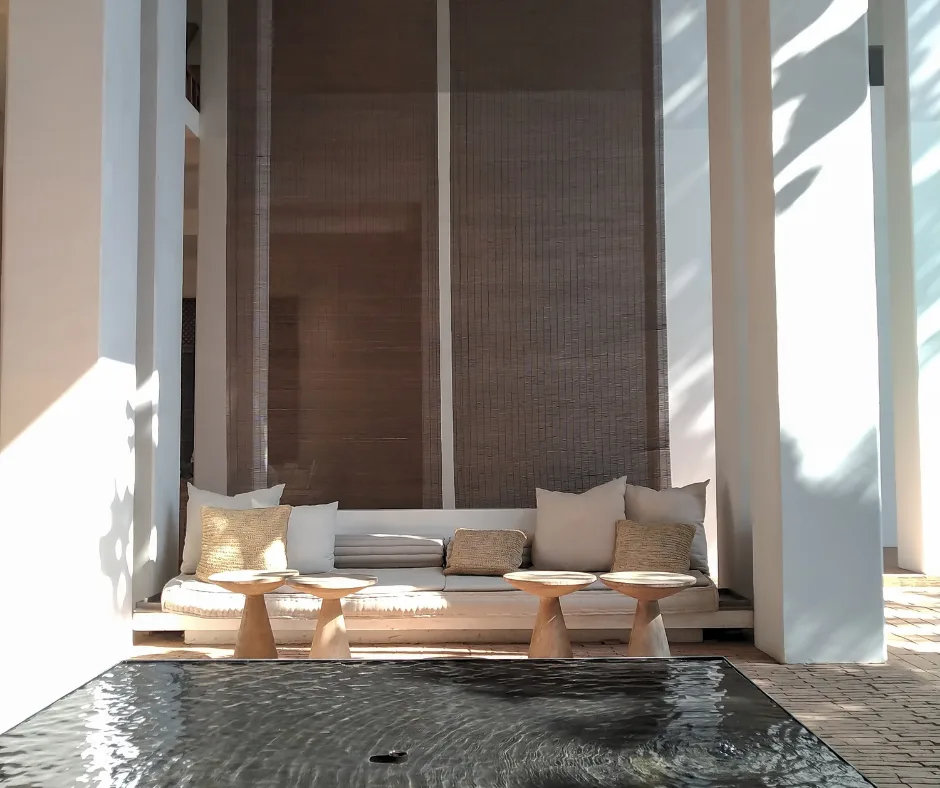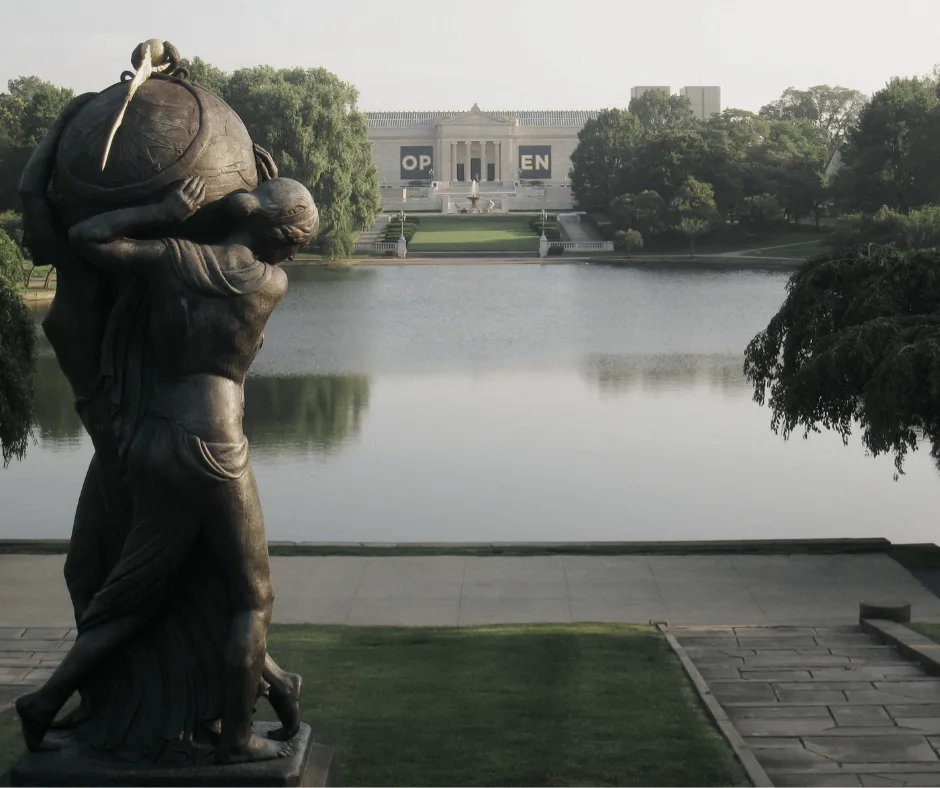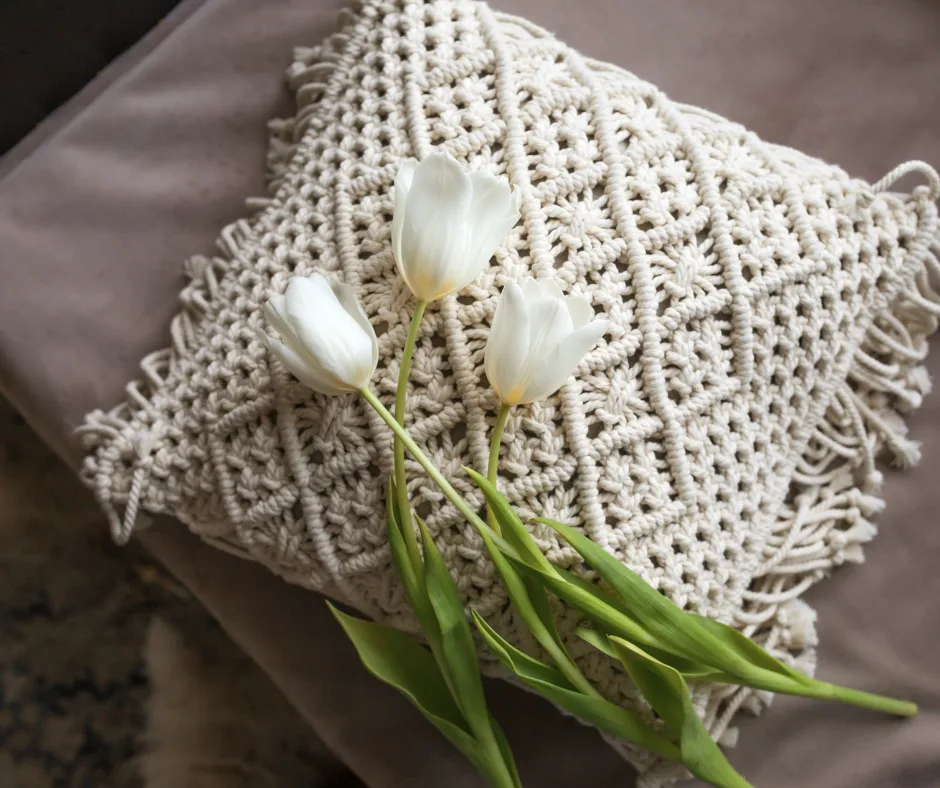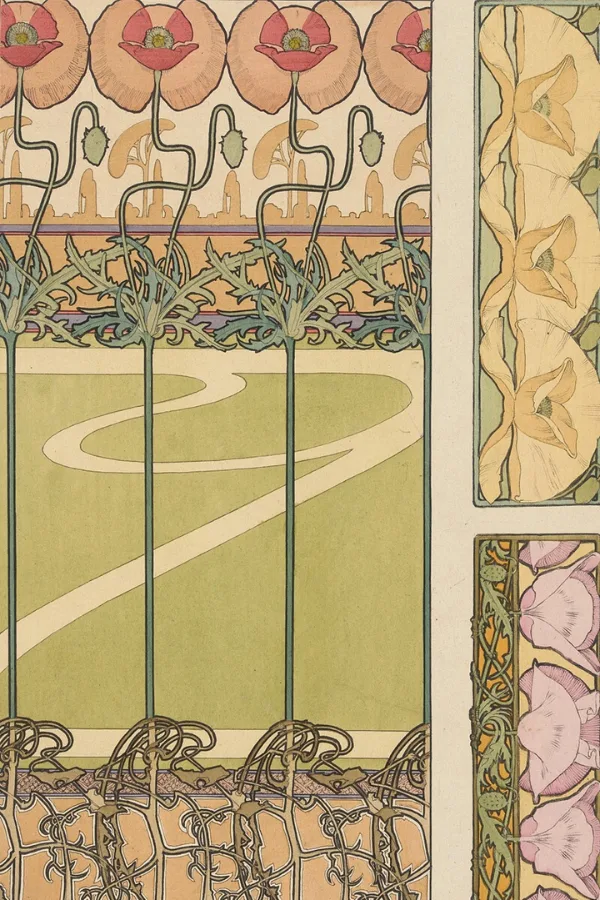
Iconic Art Deco and Art Nouveau Designs for Inspired Interiors
Summary
The turn of the century was a time of great artistic transformation, marked by the elegant, nature-inspired Art Nouveau and the sleek, modern Art Deco styles. These two movements, though distinct, coexisted and influenced each other, creating a unique period of artistic evolution. This article delves into the key artists and designers who shaped this transition, showcasing their iconic works and the impact they had on design history.
Reflection Questions
- How do you see the influence of Art Nouveau and Art Deco in modern design and architecture? Can you identify specific examples in your surroundings?
- Which elements of Art Nouveau or Art Deco resonate most with your personal aesthetic preferences? Why?
- How do the artistic transitions between Art Nouveau and Art Deco mirror broader cultural and technological changes of the early 20th century?
Journal Prompt
Imagine you are an artist living during the transition period between Art Nouveau and Art Deco. Describe your artistic journey, incorporating the influences, challenges, and innovations you encounter as you navigate these two distinct styles. How do your personal experiences and the changing world around you shape your artistic expression?
The turn-of-the-century was a time of great artistic and cultural transformation, marked by the emergence and evolution of two iconic design movements: Art Nouveau and Art Deco. This era, spanning the late 19th to the early 20th century, saw a surprising interplay between organic forms and geometric precision, natural motifs and bold modernity. Art Nouveau, with its flowing lines and nature-inspired patterns, celebrated the beauty of craftsmanship and the natural world, while Art Deco embraced the sleek lines and geometric shapes of the machine age. In this article, we explore the fascinating transition between these two influential styles, highlighting the work of iconic artists and designers who shaped the aesthetics of their time. From the intricate posters of Alphonse Mucha to the streamlined furniture of Charles Rennie Mackintosh, let’s consider the diverse ways in which artists responded to a changing world, leaving a lasting legacy on the world of design.
Turn-of-the-Century Design: The Unique Era Spanning Art Nouveau and Art Deco

The period spanning Art Nouveau and Art Deco represents one of the most unique and transformative eras in the history of art and design. Emerging in the late 19th century, Art Nouveau was characterized by its organic forms, flowing lines, and intricate patterns inspired by nature. This movement sought to break away from the rigid and historical styles that had dominated the arts, emphasizing a return to craftsmanship and the beauty of the natural world.
Designers like Alphonse Mucha and Hector Guimard epitomized this approach, creating works that were both decorative and functional. Mucha’s posters and Guimard’s architectural designs, such as the iconic Paris Métro entrances, are testaments to the movement’s commitment to aesthetic unity and elegance.
Art Nouveau (1880s-1910s)
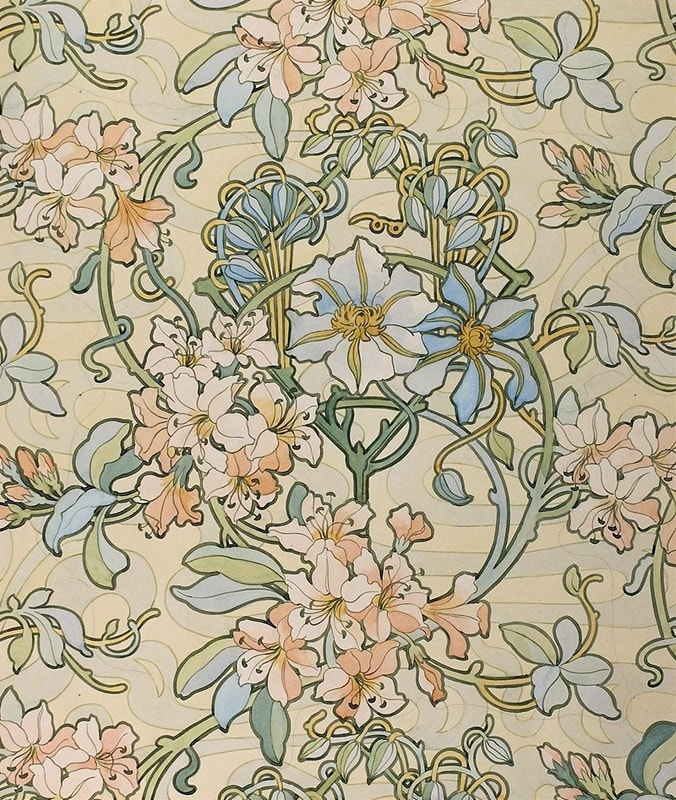
Art Nouveau permeated all forms of art, from graphic design to architecture and furniture. Its emphasis on handcrafting and detailed ornamentation reflected a broader cultural shift towards valuing the artist’s touch in an increasingly industrialized world. The movement’s widespread influence can be seen in everything from the sinuous lines of Charles Rennie Mackintosh’s furniture to the elaborate glasswork of Louis Comfort Tiffany. The era was a celebration of beauty, where even the most utilitarian objects were transformed into works of art.
Art Deco (1919-1939)

As the world moved into the 1920s, the dramatic shift to Art Deco marked a new chapter in design history. Art Deco emerged as a response to the changing technological and social landscape, embracing modernity with an emphasis on streamlined forms, geometric patterns, and bold colors. It also emerged in response (but not full opposition) to Art Nouveau.
This movement was inherently optimistic, reflecting the post-World War I era’s enthusiasm for progress and innovation. Artists like Erte and René Lalique became synonymous with this style, their works characterized by luxurious materials and a sense of dynamism. The Chrysler Building in New York City, with its striking geometric shapes and lavish decoration, stands as a quintessential example of Art Deco architecture.
The Transitional Phase (1910s-1920s)

Between the decline of Art Nouveau and the rise of Art Deco, there was a transitional phase where elements of both styles coexisted, creating a fascinating blend of organic and geometric aesthetics. This interlude saw artists like Maurice Pillard Verneuil and Jean Dunand experimenting with forms and patterns that bridged the gap between the two movements.
Verneuil’s work, which combined Art Nouveau’s natural motifs with the emerging geometric tendencies of Art Deco, exemplified this transition. Similarly, Dunand’s lacquer and metalwork showcased a seamless blend of the intricate detailing of Art Nouveau with the sleek, modern lines of Art Deco.
This period was unique not only for its stylistic innovations but also for its reflection of broader cultural and technological changes. The transition from the handcrafted elegance of Art Nouveau to the industrial chic of Art Deco mirrored society’s shift from the 19th-century artisanal traditions to the embrace of 20th-century modernity. It was a time when art and design were inextricably linked to the rapid evolution of the world, making this era a profoundly significant chapter in the history of art and design.
Patterns, Illustrations, and Designs by Art Nouveau and Art Deco Artists Who Epitomized These Periods
Emile-Allain Séguy
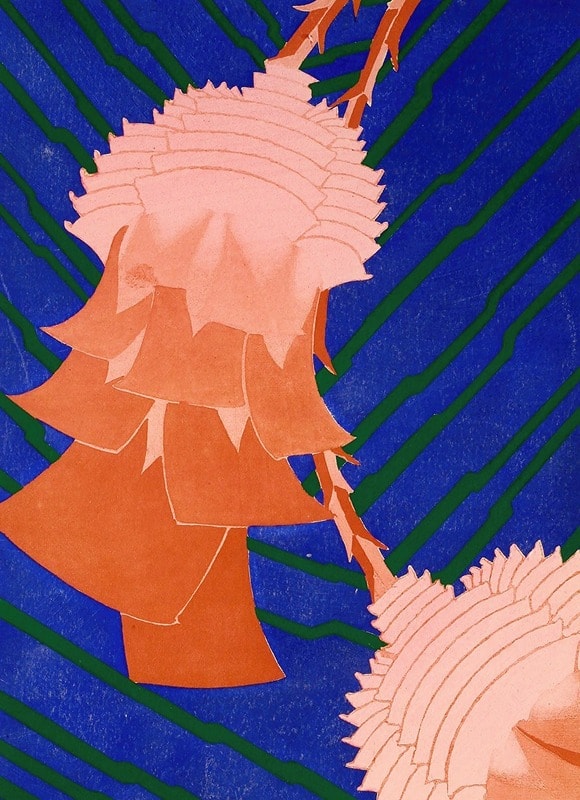
Émile-Allain Séguy bridged the Art Nouveau and Art Deco movements, embodying the essence of both styles in his distinctive designs. His work is characterized by an exquisite blend of naturalistic and geometric patterns, reflecting the organic elegance of Art Nouveau and the bold modernity of Art Deco.
Séguy’s intricate designs, such as those in his series “Papillons” and “Insectes,” showcase his meticulous attention to detail and vibrant use of color, capturing the delicate beauty of nature with scientific accuracy and artistic flair. As he transitioned into the Art Deco era, Séguy embraced more abstract and stylized forms, evident in his “Prismes” collection, which featured geometric patterns and bold color contrasts.
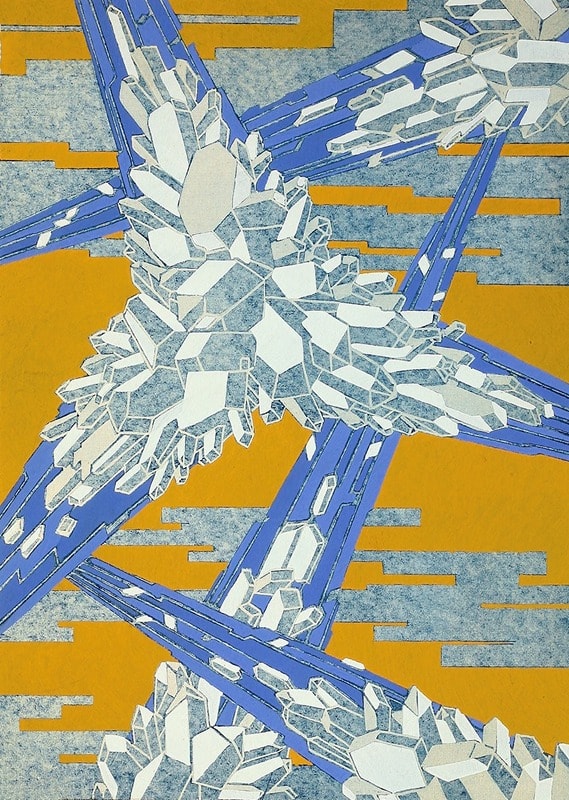
His ability to seamlessly integrate the flowing lines and natural motifs of Art Nouveau with the sleek, dynamic forms of Art Deco exemplifies the artistic evolution of this unique period. Séguy’s work not only illustrates the aesthetic shifts of the early 20th century but also highlights the broader cultural and technological transformations of the time.
Erte (Romain de Tirtoff)
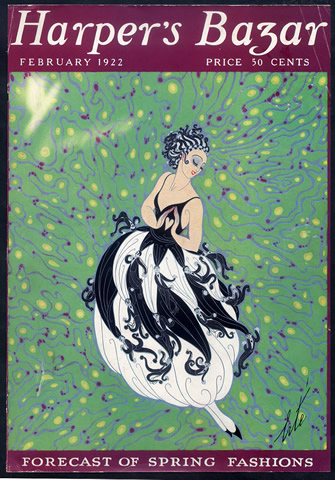
Erte (Romain de Tirtoff) stands as a quintessential figure within the Art Deco movement, celebrated for his distinctive fashion illustrations, theatrical costume designs, and decorative arts. His work is characterized by its bold geometric shapes, elegant lines, and rich use of color, all hallmarks of the Art Deco style. Unlike the organic and flowing forms of Art Nouveau, Erte’s designs embraced modernity and luxury, reflecting the era’s fascination with progress and opulence.
Fuel your creative fire & be a part of a supportive community that values how you love to live.
subscribe to our newsletter
*please check your Spam folder for the latest DesignDash Magazine issue immediately after subscription
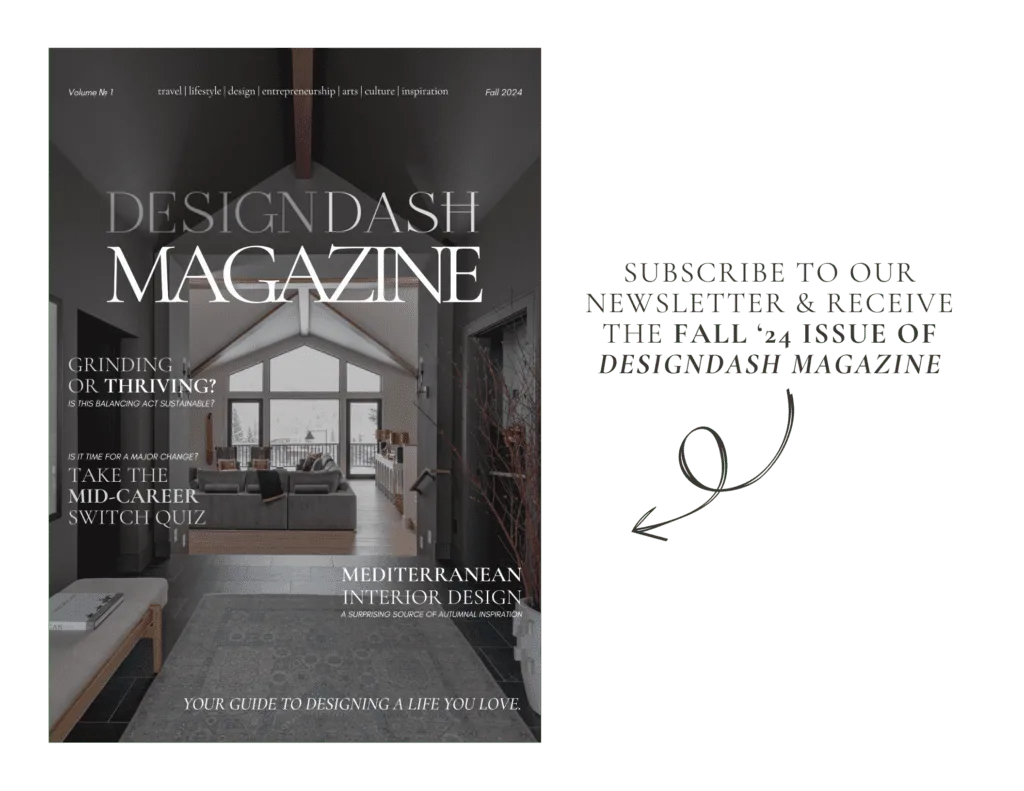
His illustrations for Harper’s Bazaar and his stage designs showcased a refined sophistication and a flair for dramatics, making him a significant influencer in the visual culture of the 1920s and 1930s. Erte’s ability to infuse his creations with both artistic beauty and commercial appeal allowed him to leave a lasting impact on the world of fashion and design, solidifying his place as a key artist of the Art Deco period.
Alphonse Mucha
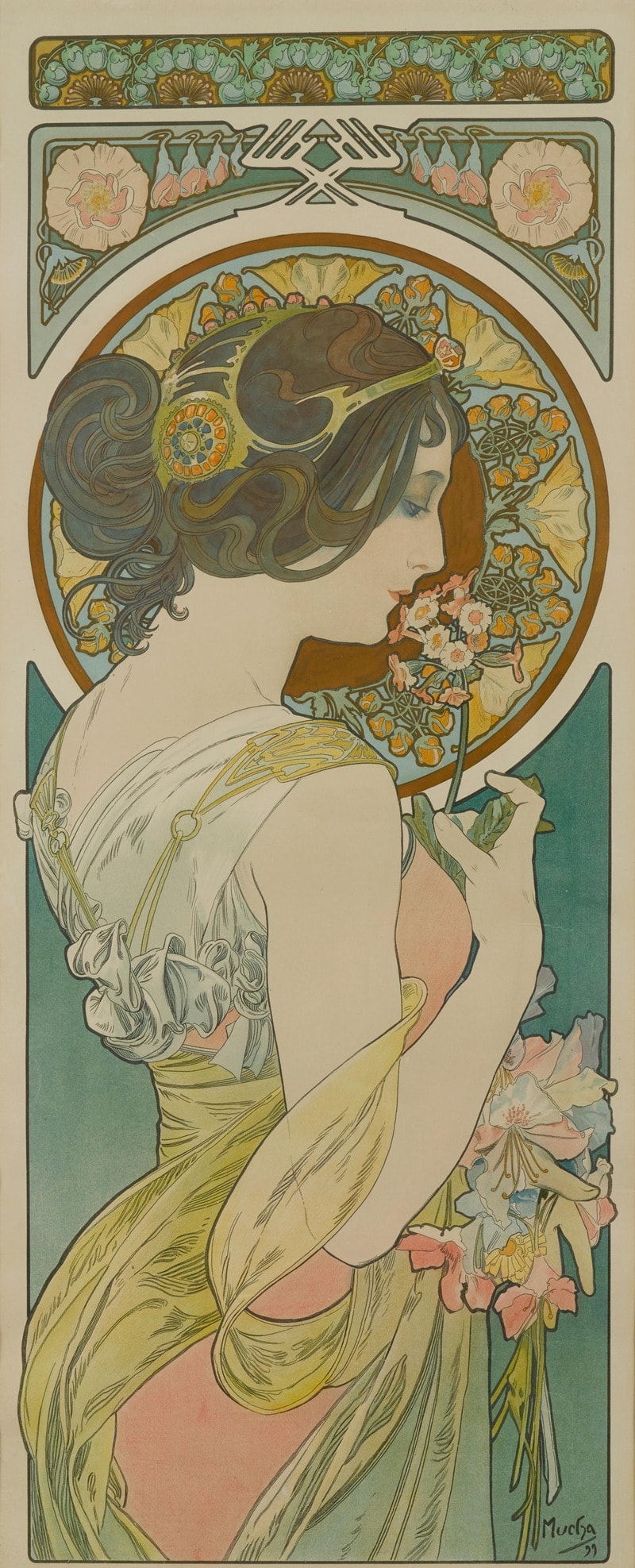
Alphonse Mucha is a defining figure of the Art Nouveau movement, celebrated for his intricate and highly decorative posters, illustrations, and designs. His work is characterized by flowing lines, organic forms, and elaborate floral and botanical motifs. Mucha’s posters, particularly those featuring actress Sarah Bernhardt, are iconic examples of Art Nouveau’s emphasis on natural beauty and elegance.

His use of soft, pastel colors and detailed patterns created a sense of harmony and grace, which became synonymous with the movement. Mucha’s influence extended beyond poster art, impacting jewelry, wallpaper, and interior design, solidifying his legacy as a central figure in the Art Nouveau period.
Gustav Klimt
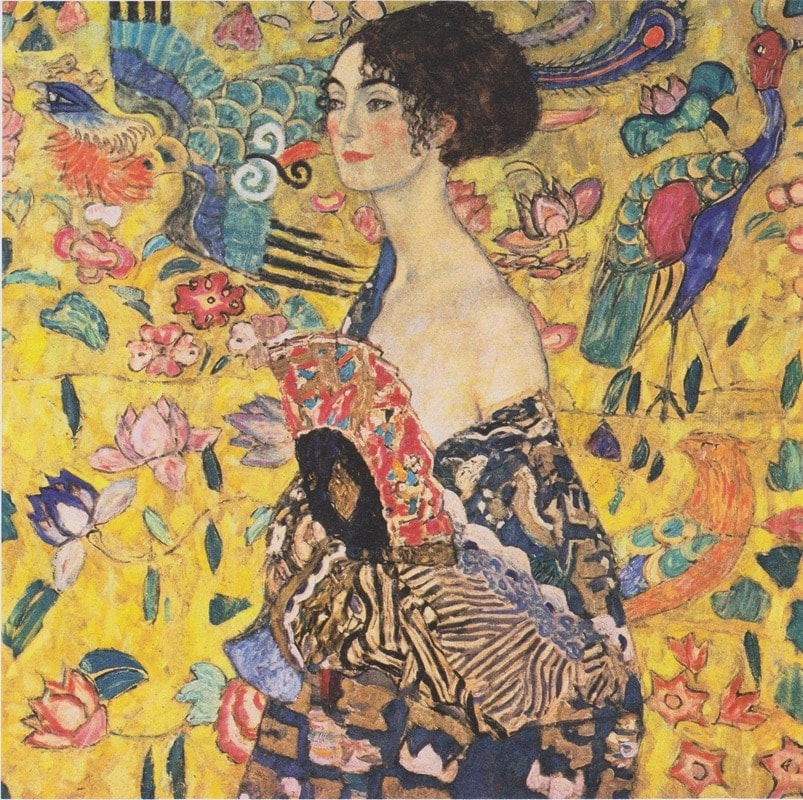
Gustav Klimt, an Austrian painter, is closely associated with the Art Nouveau movement, particularly through his involvement with the Vienna Secession. His work is celebrated for its sensuality, elaborate patterns, and use of gold leaf, as seen in his masterpiece “The Kiss.”
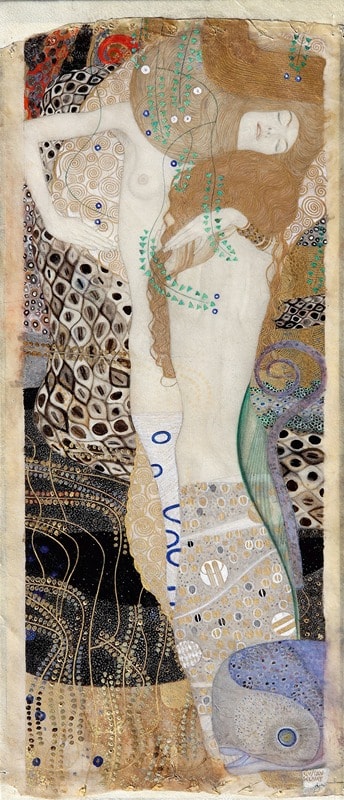
Klimt’s paintings often feature intricate, swirling designs and symbolic motifs that reflect the organic and decorative qualities of Art Nouveau. His focus on the human form, combined with rich, ornate backgrounds, created a unique blend of realism and abstraction. Klimt’s innovative approach to art and his distinctive style have made him one of the most influential artists of the Art Nouveau era.
Sonia Delaunay

Sonia Delaunay was a key figure in the transition from Art Nouveau to Art Deco, known for her pioneering work in abstract art and design. Her vibrant use of color and geometric patterns marked a departure from the organic forms of Art Nouveau, aligning more closely with the modernist principles of Art Deco.

Delaunay’s work spanned various mediums, including painting, textiles, and fashion design. Her bold, rhythmic compositions and use of contrasting colors were influential in both the fine arts and applied arts, helping to shape the visual language of the 20th century. Delaunay’s innovative designs and her ability to merge art with everyday objects cemented her legacy as a significant contributor to the Art Deco movement.
Victor Horta

Victor Horta is widely regarded as one of the pioneers of the Art Nouveau movement, particularly in architecture. His buildings, such as the Hôtel Tassel in Brussels, are celebrated for their innovative use of iron and glass, as well as their flowing, organic forms. Horta’s designs often featured intricate wrought ironwork, curvilinear lines, and naturalistic motifs that seamlessly integrated structure and decoration.
His emphasis on light, open spaces, and fluid interior layouts exemplified the principles of Art Nouveau, creating a harmonious and aesthetically pleasing environment. Horta’s work had a profound impact on the development of modern architecture, influencing subsequent movements and establishing him as a key figure in the Art Nouveau era.
Maurice Pillard Verneuil
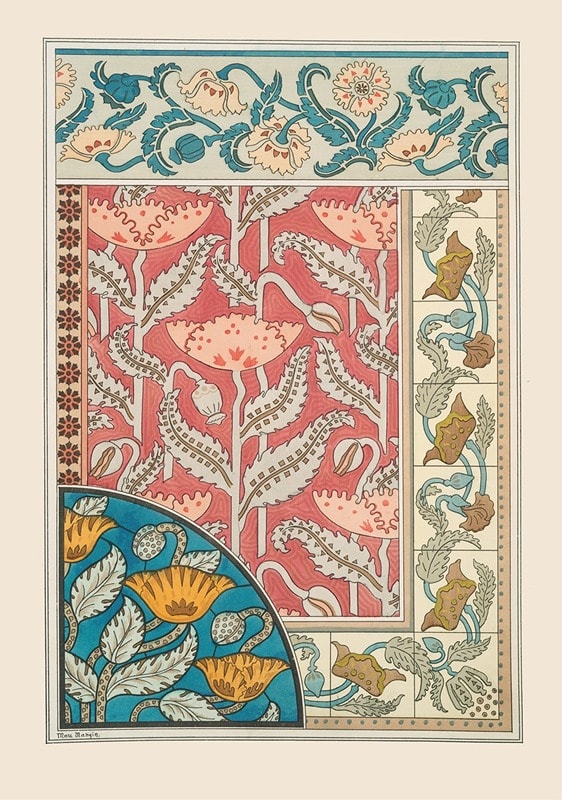
Maurice Pillard Verneuil was an influential figure in both the Art Nouveau and early Art Deco movements. His work is renowned for its detailed and vibrant patterns that often drew inspiration from natural elements such as flowers, animals, and marine life. Verneuil’s early designs exemplify the organic forms and intricate detailing characteristic of Art Nouveau, while his later works began to incorporate the more geometric and stylized motifs of Art Deco.
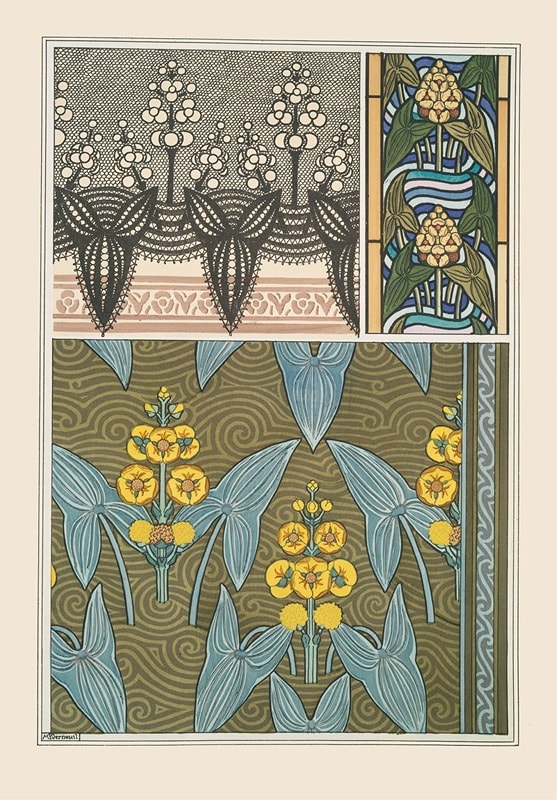
His ability to seamlessly transition between these two styles illustrates the fluidity and adaptability of his artistic vision, making him a pivotal figure in the evolution of decorative arts during this unique period.
Georges Barbier

Georges Barbier was a prominent illustrator and designer whose work spanned the Art Nouveau and Art Deco periods. Known for his elegant fashion illustrations and theatrical designs, Barbier’s art often featured sophisticated, elongated figures adorned in luxurious and stylish attire.
His early works were influenced by the flowing lines and ornate details of Art Nouveau, but he soon embraced the bold geometric shapes, vibrant colors, and modernist aesthetics of Art Deco. Barbier’s contributions to fashion illustration and costume design captured the spirit of the times, blending artistry with commercial appeal, and leaving a lasting impact on both movements.
Eugène Grasset

Eugène Grasset was a key figure in the Art Nouveau movement, recognized for his contributions to graphic design, illustration, and decorative arts. His work is characterized by intricate patterns, flowing lines, and a strong emphasis on nature-inspired motifs.
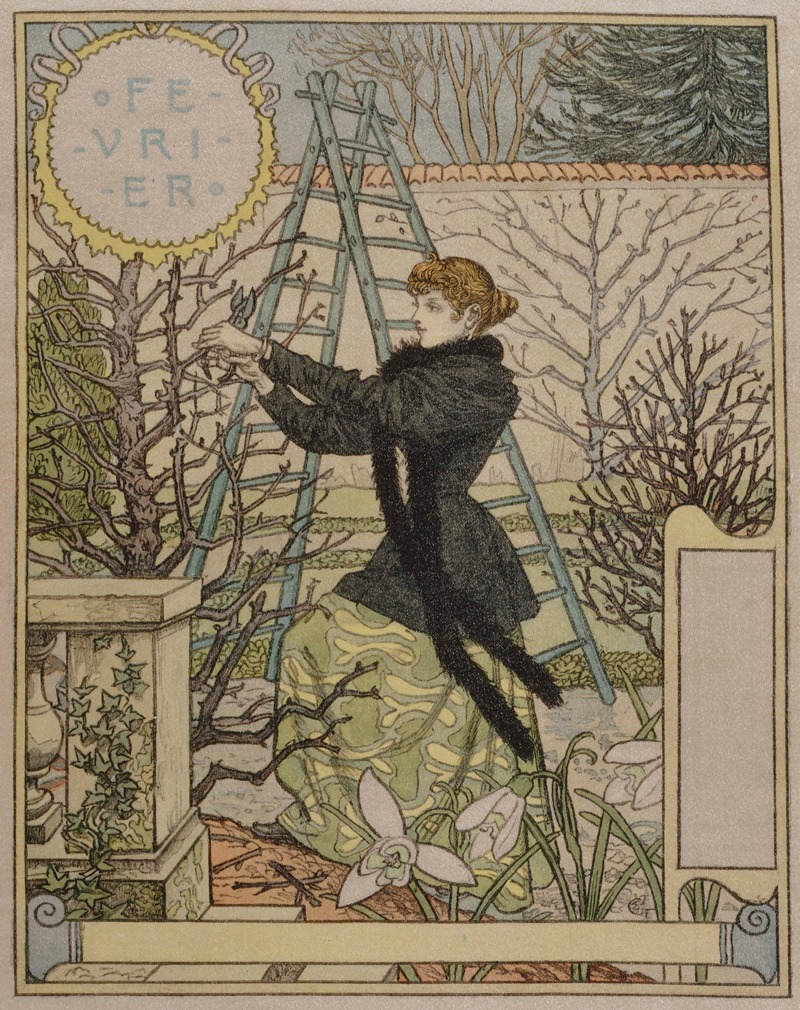
Grasset’s posters, book illustrations, and stained glass designs exemplify the Art Nouveau style, with their harmonious compositions and elaborate detailing. His influence extended across various media, from textiles to ceramics, making him a versatile and prolific artist. Grasset’s ability to infuse everyday objects with artistic beauty helped define the aesthetic of the Art Nouveau era.
Charles Rennie Mackintosh
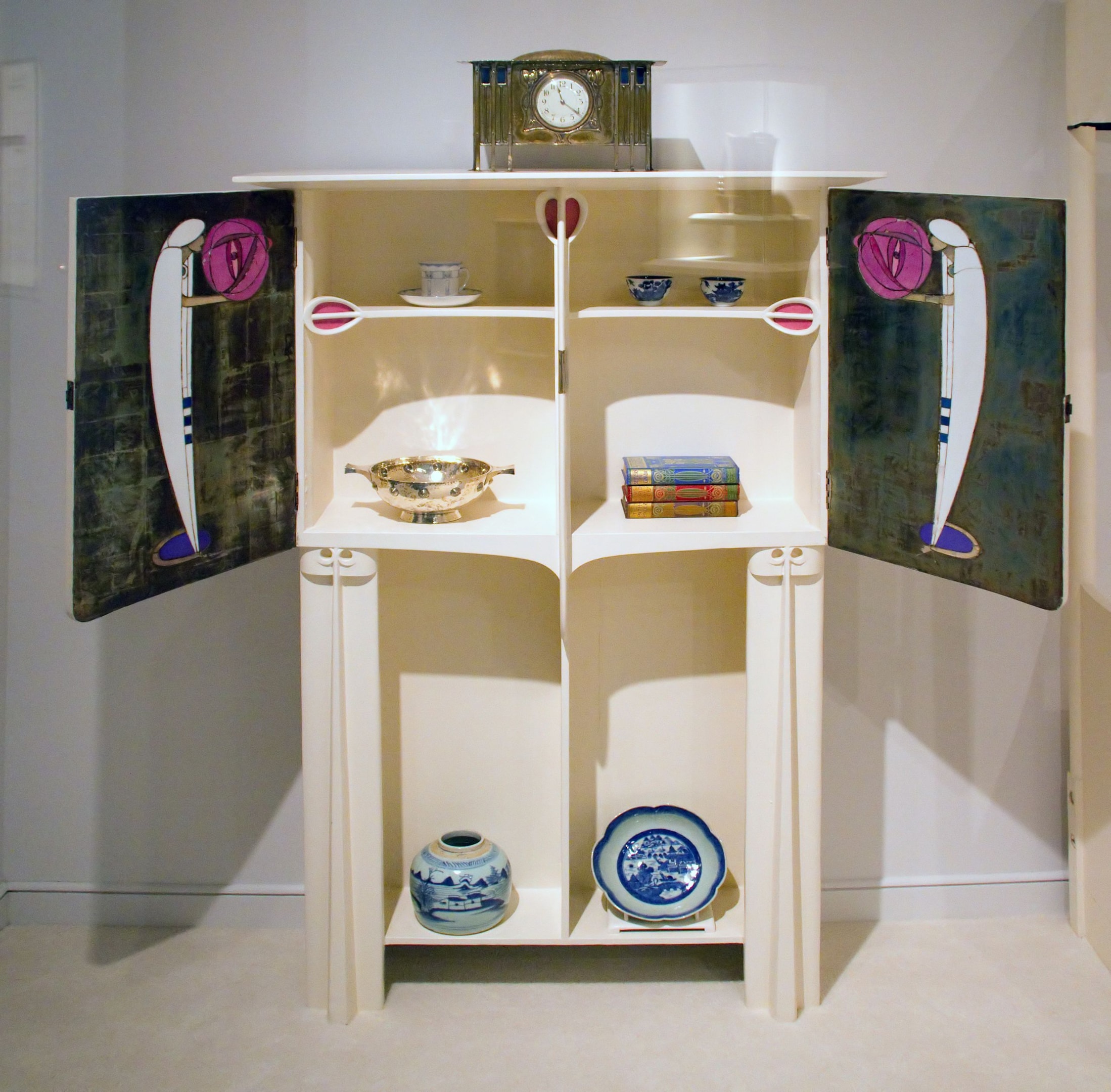
Charles Rennie Mackintosh was a Scottish architect and designer whose work is synonymous with the Art Nouveau movement, particularly through his association with the Glasgow School. His designs are noted for their unique combination of organic forms and geometric precision, often featuring stylized floral motifs and an innovative use of space and light.
Mackintosh’s architectural works, such as the Glasgow School of Art, and his furniture designs, exhibit a distinctive elegance and modernity that set them apart from other Art Nouveau works. His influence extended beyond architecture to textiles, graphic design, and interior design, making him a pivotal figure in the development of modern design.
Final Thoughts
From the sinuous, nature-inspired forms of Art Nouveau to the bold, geometric lines of Art Deco, the late 19th to early 20th centuries encapsulated a shift toward modernity and a celebration of craftsmanship. It’s no wonder that the patterns and paintings pictured above continue to inspire and influence interior design today.
Written by the DesignDash Editorial Team
Our contributors include experienced designers, firm owners, design writers, and other industry professionals. If you’re interested in submitting your work or collaborating, please reach out to our Editor-in-Chief at editor@designdash.com.






